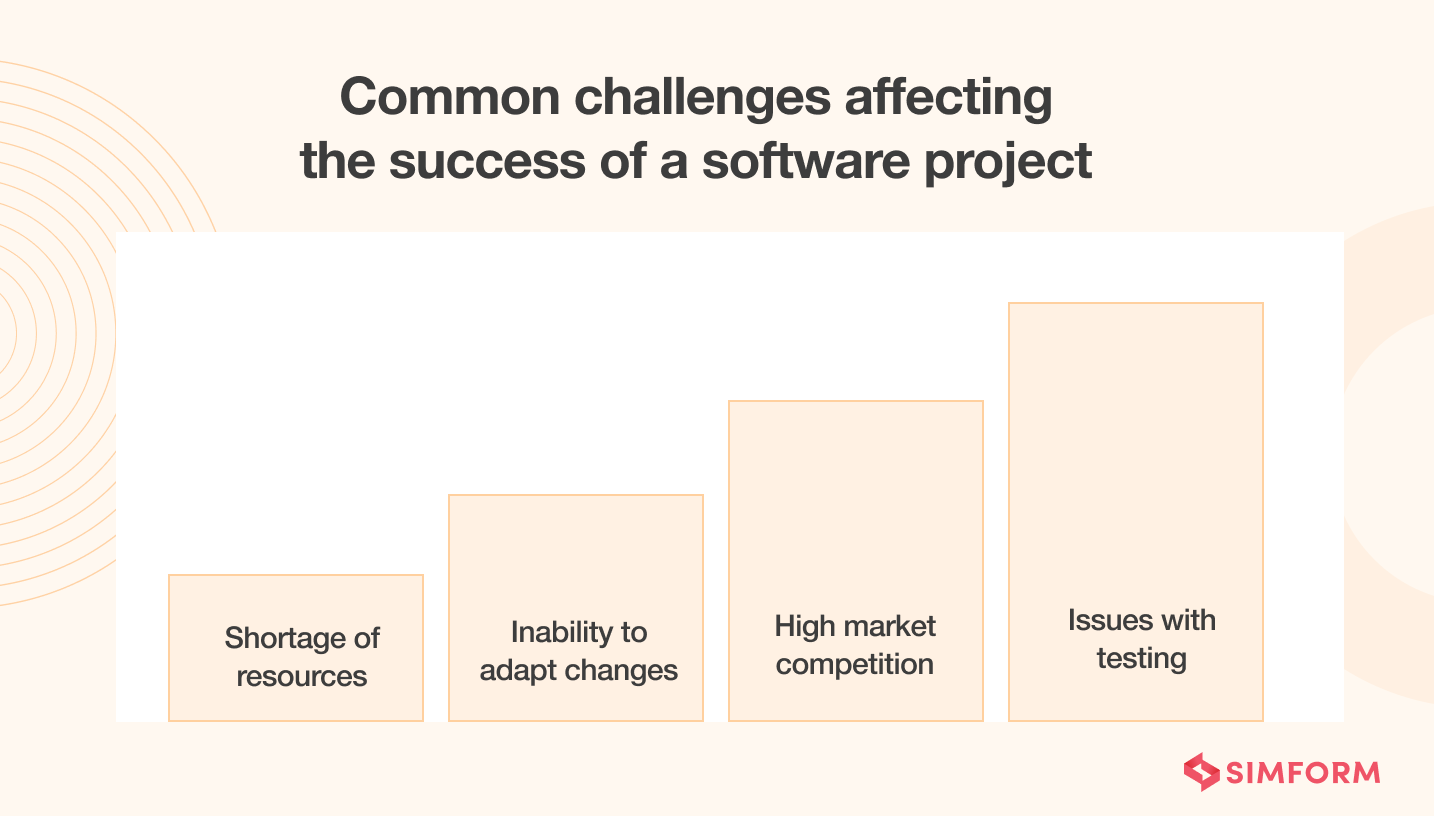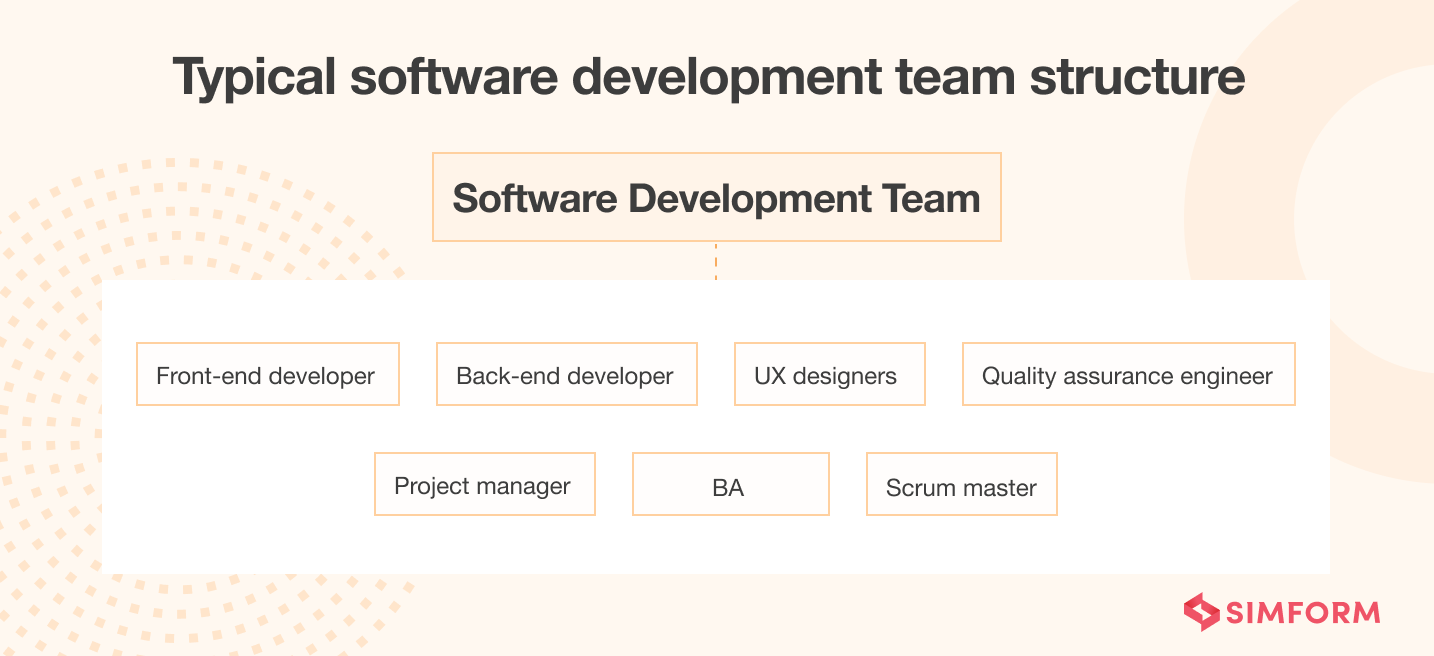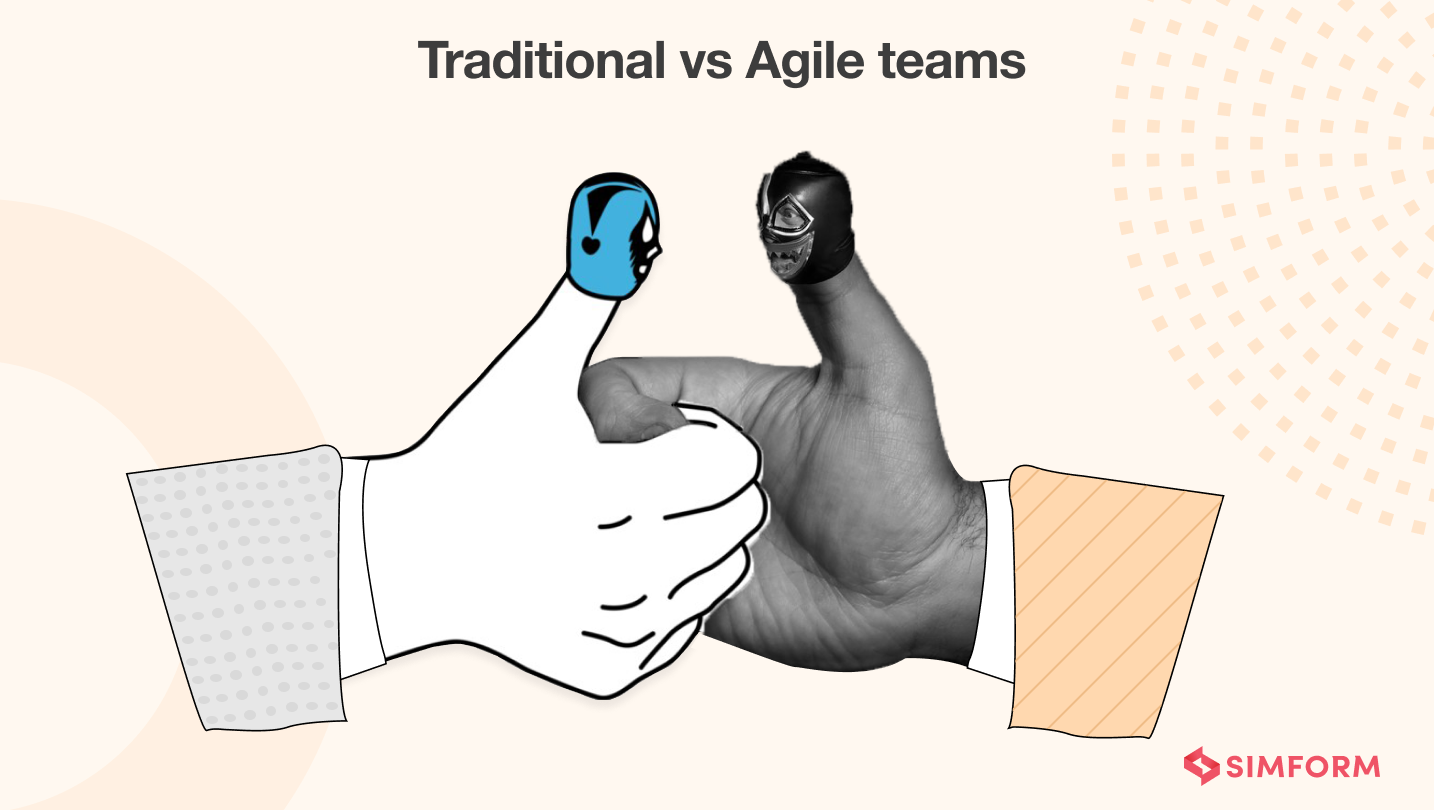Imagine having an excellent product idea with the potential to skyrocket your profits and generate value for users. Or planning relentlessly to give your company a complete digital overhaul! No matter how inspiring this may sound, it might give you chills without an innovative software development team to bring your vision to life.
Of course, setting up a software development team is not a child’s play as it requires immense care and planning. The failure rate in newly built software is high for various reasons, including a lack of individual and collective confidence in the project’s success. As per a report, the cost of the poorly developed software is approximately $2.08 trillion.
To do it right, you should learn IT terminologies and the industry best practices, get the best developers at work and have standard performance markers. But now a question arises –
“How to hire the right team?”
This question often comes to any product owner or product manager’s mind when building software. So we will help you find the answer by providing a complete guide highlighting the challenges, factors, software development team roles, and responsibilities.
So, let’s find out why having a great development team is essential in this day and age of immense challenges and competition.
Common challenges affecting the success of a software project
Managing projects of all sizes and complexities are part of business, and the software development process is no different. Modern custom software development, infrastructure-related projects, timely updates, and growth in technical knowledge are constant within the IT industry.
Here are the challenges your software project might encounter:

- Shortage of resources – Without sufficient resources from materials to personnel, the project is at risk of failing to deliver the expected scope, staying within the financial budget, or completing on time.
- Inability to adapt to changes – Constant changes in project requirements can cause unnecessary delays at times and affect your time to market without experienced tech resources.
- High market competition – Maintaining a competitive edge in an ever-changing and fast-paced tech landscape.
- Issues with testing – Delivering high-quality products requires the product to undergo several testing rounds. But there are issues like vaguely defined quality standards, lack of communication, unstable environment, and more.A strong software development team is the key to avoiding project failure and guaranteeing success.
Factors affecting the size & structure of a development team
There cannot be any fixed number regarding the size of your dream software development team. While smaller teams can have improved collaboration, you can’t afford to lose any member to the lion’s share in achieving goals. On the contrary, bigger teams are generally apt to deal with issues like unnecessary hindrances but struggle with communication challenges.
Establishing a clear software development team structure is an essential first step toward the overall success of your project. For that, you need to keep a few things in mind, which are as follows –
1. Type of software
Firstly, you must define the type of software you want to build. You can have a dedicated software development team of three to five members if you want to build a software prototype. On the other hand, there will be a high chance of an increase in the number of team members when building a fully-featured app right from scratch.
In addition to this, you can consider hiring more than six developers to create an MVP (Minimum Viable Product). Generally, an agile team consists of around nine members. And, if your project is large-scale, you can consider working with multiple agile teams.
2. Budget
The budget would certainly affect every decision of yours, like the number of team members you hire to make your software robust and feature-rich. Therefore, you should adopt the agile approach to reduce project expenses without sacrificing quality. Subsequently, you can easily focus on high-priority features and have better cost flexibility.
3. Project size
Software projects and practices are not uniform. However, we can define project size as the degree and extent to which project management practices are applied formally. This is particularly important in the environment where multiple projects are going on simultaneously as they often face a shortage of funds and resources.
Therefore, you need to define the size of your project beforehand. If it is complex, you need to hire a team of specialists. On the contrary, if the project requires overlap between different aspects of the business, then Generalist developers are suitable for you. It provides you with various technological alternatives to solve a problem.
Standard approaches to software development team structure
You’ve got a project at hand, and now you want to bring it to life. So what do you need to do? Gather highly skilled and experienced professionals to kickstart your project! Sounds easy, right? But it isn’t.
Assembling capable software professionals is paramount for creating an excellent team. That means you must decide precisely the type of team you need to deliver the project.
Here are some popular approaches to help you choose the right people –
1. Generalist
Generalists are the ones who can be touted as the jack of all trades as they possess a broad range of expertise, providing a complete solution to the problem. In addition, generalist team members are flexible enough to apply their knowledge across vast areas.
When to Choose –
- If your software development project doesn’t require any particular skill or knowledge
- If you are going short on time or directly want to integrate your project
- When you want to gain comprehensive knowledge
2. Specialist
Unlike generalists, specialist team members have a deep understanding of a specific discipline. As a result, they can deliver their product efficiently and faster.
When to Choose –
- When you’re focusing on a particular development methodology
- Specialist developers are suitable for complex projects requiring broader technological expertise.
- When you have a project that requires constant scaling to fulfill the needs of a flourishing user base
- When your project requires capable hands with in-depth knowledge, they will be ready to take whatever they need to do at any given time.
3. Hybrid
There are some instances in software development that demands a combination of generalist and specialist team structure. This kind of team structure is known as a hybrid or matrix team. A hybrid team structure gives software companies the advantage of both product and technical professionals in a single team.
Generally, generalists will focus on the team’s big picture while specialists can concentrate on handling the specific details. Subsequently, the strengths and weaknesses of hybrid team members will get balanced.
When to Choose –
- When you want to share knowledge across various departments
- When you want to cut exorbitant development costs
There are many debates about the skill sets of a software architect. You may also doubt who you should hire first: a specialist, a generalist, or both. What matters is not the breadth or depth of a particular professional’s skills but their adaptability and open-mindedness. A person with a learning attitude and excellent soft skills can effortlessly switch from generalist to specialist role on-demand.
Roles in Software Development Team
Ideally, a small team of generalists and experts get along with ease. But the fact is that every firm has time and money constraints. And that is why many outsourced software development teams are generalists.
So who exactly makes up these teams? Let’s have a look at the different roles of a software development team –

1. Frontend developer
Frontend developers build the software interface with which the users interact first. Moreover, they ascertain that the screen resolution and size are suitable for every device. Also, a frontend software developer ensures that software is lightweight, runs seamlessly even on low-end devices, and provides proper interaction with the backend.
2. Backend developer
Backend developers handle the functionalities of a software product. They look after resource-intensive calculations, communication with other apps or websites, and other essential things that users cannot see. Additionally, backend developers work closely with other development team members to conceptualize software functions.
3. UX designers
UX or UI designer is the one who designs the way users interact with the software. They make everything appealing and create a convenient user experience. Generally, the UI/UX designers work on a custom look and impression of a software’s user interface, focusing on improving the usability and functionality of the software.
4. Quality assurance engineer
A QA engineer is someone who gives meticulous attention even to the smallest detail. They test the product to ensure that the final product meets the client’s requirements and pre-defined quality standards. Furthermore, QA engineers detect errors and bugs in the initial stage and work with the team to fix them before they reach end users.
5. Project manager
Project manager takes care of planning, selecting the right technology stack, and executing software development tasks. Also, they build relationships among the client and different departments of an enterprise. Project managers oversee all the processes, delegate the tasks among other team members, and ensure that everyone stays on track.
6. BA
A Business Analyst is responsible for formulating objectives, and business logic, crafting product vision, and documenting important processes. They decide the route for business growth by assessing what works better. Business analysts use Sitemap, Product Backlog, Value Proposition, and Business Model Canvas to work as a proxy between the developers and clients.
7. Scrum Master
Scrum methodology facilitates agile teams to adapt and manage themselves according to changing project needs by following the agile development principles. A scrum master or team lead is a professional who facilitates and orchestrates everything within the boundaries of a defined scrum framework.
Agile vs Traditional Project Management

Traditional methodologies are based on pre-organized stages of the software development life cycle. They are best- suited when requirements are precise. On the contrary, the agile method is suitable when the product vision or features are undefined or complex.
Let’s take a glance at the vital differences between traditional and agile project management methodologies –
Main characteristics of great software development teams
Successful projects are not the ones built by mediocre teams; they result from the meticulous efforts of an effective and skilled team. Therefore, the biggest challenge for an organization is ensuring its employees are motivated and perform at best possible level.
Following are some key attributes of a strong development team –
- Clear communication – Clear and precise communication plays a game-changer role in the success of your software development team. It is also a sign of a healthy team. So if you have a big team of developers, you should employ the necessary software development tools and processes to ensure effortless communication among members.
- Well-defined roles – You must ensure that every member of your software team knows their roles, expectations, and responsibilities. Defining all these specifications right from the start helps develop accountability among team members.
- Minimal Supervision –Every member of a powerful software development team is clear with their goals and has a shared vision. As a result, individuals can do their job well without needing to be pushed or forced.
- Better collaboration –Collaboration is imperative to make a software product development team successful. It brings a positive culture, a sense of responsibility, and individual accountability. Team collaboration allows members to address difficulties by driving effective brainstorming and creative thinking.
- Transparent culture – The team members who enjoy quality time together can deal with any task easily. You should develop a strong culture of professional bonds where there is mutual respect among members regardless of their designations.
Have the right software development team for project success!
A well-structured software development team is a prerequisite for building an excellent product. However, the type of members in your software team depends on multiple factors like the complexity, budget, and timeline of a project.
Then, you need to figure out what factors contribute to your team’s performance. Then, you can train your teams to deliver better performance. Here are some effective ways to boost your team’s productivity –
- Create a constructive environment within your enterprise.
- Be the support system of your team members and guide them as and when needed.
- Define all the tasks to maintain a smooth workflow and remove unnecessary interruptions.
- Offer employees a chance to take on a new task or opportunity.
Simform enables its clients to supercharge their development process with a team of world-class software developers. With over ten years in software development, we can assist you in assembling a team with the right talent to bring you one step closer to your dream software product. Feel free to connect with us to build a world-class software development team.
